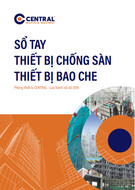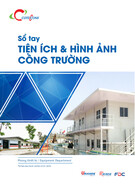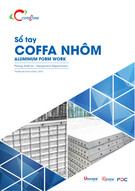
Journal of Science and Technology in Civil Engineering, HUCE, 2024, 18 (4): 41–53
FORMULAS FOR DETERMINING THE CRITICAL BUCKLING
STRESS OF I-SHAPED MEMBERS UNDER PURE BENDING
Chiem Dang Tu Quoca,∗, Bui Hung Cuongb, Han Ngoc Ducb
aChau Hung town, Vinh Loi district, Bac Lieu province, Vietnam
bFaculty of Building and Industrial Construction, Hanoi University of Civil Engineering,
55 Giai Phong road, Hai Ba Trung district, Hanoi, Vietnam
Article history:
Received 22/10/2024, Revised 04/12/2024, Accepted 16/12/2024
Abstract
Steel structures are widely used in construction, and the stability conditions for these structures are of greater
concern due to their long and slender characteristics. When a plate element is subjected to axial compression,
bending, shear, or a combination of these forces in its plane, the plate may buckle locally before the member
as a whole becomes unstable or before the yield stress of the material is reached. This local buckling behavior
causes the plates in the cross-section of the steel member to interact with each other. Therefore, it is necessary
to consider this interaction when calculating or checking for stability conditions. In this research, the proposed
formulas determine the buckling coefficient as well as the local critical stress for I-shaped steel beams, account-
ing for the flange-web interaction when the flange-thickness to web-thickness ratio changes. Additionally, the
buckling analysis results indicate that local buckling stress does not depend on the length-to-height ratio but is
impacted by the height-to-width and thickness-to-width ratios. Comparisons between the proposed formulas
and numerical results show that the suggested formulas have high reliability when the coefficient of variation
is small and the coefficient of determination is very high.
Keywords: local buckling; local critical stress; buckling coefficient; flange-web interaction; I-shaped sections.
https://doi.org/10.31814/stce.huce2024-18(4)-04 ©2024 Hanoi University of Civil Engineering (HUCE)
1. Introduction
I-shaped steel members are widely used in construction, such as beams and columns. These
members are composed of steel plates, and when subjected to bending or compression, they can
become unstable due to the formation of compression regions in the cross-section. To ensure the load-
bearing capacity of the I-section steel beams, the stability conditions must be checked. Recently, many
authors have researched the local buckling of thin-walled steel members. Bhowmick and Grondin
[1] investigated the local buckling of I-shaped members bent about their weak axis. Han and Lee
[2] studied the effect of web slenderness on the elastic flange local buckling of I-beams. Shi et
al. [3] examined the local buckling behavior of I-section beams fabricated from high-strength steel.
Kuwamura [4] estimated the local buckling behavior of thin-walled stainless steel stub columns. Shi
et al. [5,6] conducted several experimental investigations on the local buckling behavior of high-
strength steel welded-section stub columns. Cao et al. [7] investigated local buckling behavior of
high-strength welded I-section columns under axial compression. Shi and Xu [8] experimented on
I-beams under different loading conditions to study the local buckling behavior. Zhang et al. [9]
studied local buckling behavior of steel faceplates and their influence on the compressive strength of
steel-plate composite walls. Deepak and Anathi [10] evaluated the local buckling behavior of built-up
cold-formed steel homogeneous and hybrid double I-box column sections under axial compression
∗Corresponding author. E-mail address: tuquoc4171@gmail.com (Quoc, C. D. T.)
41








































